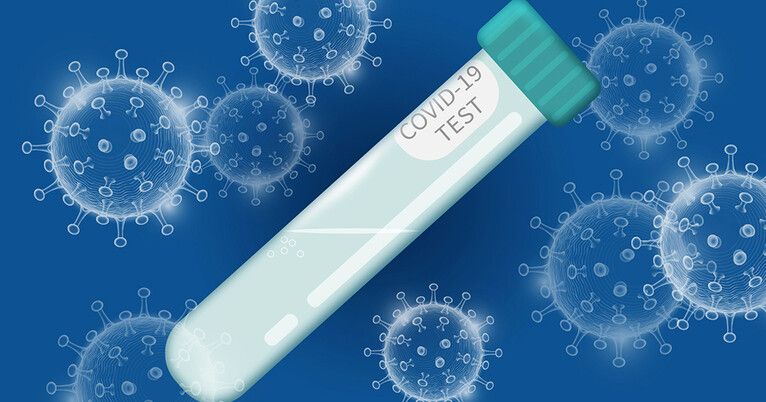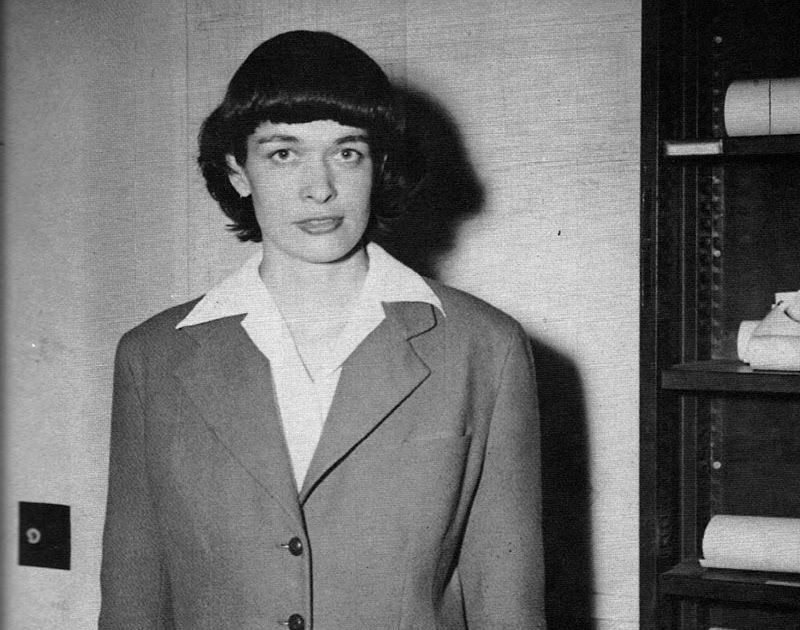The YSPH-developed test, called SalivaDirect, has been used as part of an NBA testing program and will now be available to more diagnostic laboratories.


This video explains in detail about the post transcriptional modifications on histone proteins, epigenetics, methylation, phosphorylation, acetylation, ubiquitylation and sumoylation.


Female #Astrophysicist Helped Build 1st #AtomicBomb
Today marks 75 years since the 1st use of #nuclear weapons in #war-time, when the #US dropped the 1st atomic bomb on #Hiroshima, #Japan. One of the very few female #scientists who worked on the #ManhattanProject went on to become a researcher in high-energy #physics, #astrophysics, #cosmology, & diatomic molecular #spectroscopy.
MORE INFO: CLICK ON #IMAGE OR LINK
LIKE THIS POST? PLEASE SHARE!
Link.
Photograph of Leona Woods Marshall at the University of Chicago on 1946 December 2.

One of the final pieces for the first test flight of NASA’s huge Space Launch System heavy-lift rocket recently arrived at the Kennedy Space Center, joining other elements already at the Florida spaceport awaiting shipment of the SLS core stage once it completes testing at a NASA facility in Mississippi.
The Launch Vehicle Stage Adapter, or LVSA for the first SLS test launch arrived at the Kennedy Space Center in Florida aboard NASA’s Pegasus barge July 29. Early the next day, hours before the liftoff of NASA’s Mars 2020 Perseverance rover from a launch pad a few miles away, ground crews transferred the LVSA from the Pegasus barge into the Vehicle Assembly Building at the Florida spaceport.
The LVSA is the second-to-last element of the first Space Launch System rocket to arrive at the Kennedy Space Center. The biggest piece of the rocket, known as the core stage, is expected to arrive at Kennedy after test-firing of its four main engines on a test stand in Mississippi later this year.

One of the major challenges in turning quantum technology from potential to reality is getting super-delicate quantum states to last longer than a few milliseconds – and scientists just raised the bar by a factor of about 10,000.
They did it by tackling something called decoherence: that’s the disruption from surrounding noise caused by vibrations, fluctuations in temperature, and interference from electromagnetic fields that can very easily break a quantum state.
“With this approach, we don’t try to eliminate noise in the surroundings,” says quantum engineer Kevin Miao, from the University of Chicago. “Instead, we trick the system into thinking it doesn’t experience the noise.”

Aside from tracking asteroids that could endanger the planet, the telescope played a major role in the “SETI” program — the search for intelligent life. It was notably used by astronomer Carl Sagan to send an interstellar message.
Earlier this week, the facility was forced to close down after a cable supporting a metal platform above the telescope fell, tearing a 100-foot gash in its giant reflector dish.
“The cable didn’t really break in the sense of a cable kind of snapping, but it just sort of slipped from its socket, which is you know, an even weirder condition,” Arecibo Observatory Director Francisco Cordova told CBS News’ Jeff Glor.

On mars, nasa’s perseverance mars rover

The high demand on medical devices and personal protective equipment (PPE) during the COVID-19 crisis left millions of health care professionals unprotected in the middle of this situation, as governments around the world were not prepared for such pandemic. The three-dimensional printing (3DP) community, from universities to 3DP enthusiasts with printers at home, was there to support hospitals from day 1 on this demand by providing PPE and other medical supplies (e.g., face shields and valves for respiratory machines). This editorial covers the importance of 3DP in the fight against COVID-19 and how this can be used to tackle potential pandemics and support the supply chain.
After a series of cases of pneumonia in Wuhan, the capital city of Hubei province (China), the Chinese health authorities announced in January 2020 that a novel coronavirus, officially known as severe acute respiratory syndrome coronavirus (SARS-CoV)-2, was responsible for these cases.1 SARS-CoV-2, the virus that causes the coronavirus disease (COVID-19), was not detected before the recent pandemic and has been known to be genetically similar to SARS-CoV.1 The COVID-19 is transmitted mainly through contact with an infected individual, through droplets that are produced when the patient coughs or sneezes or through droplets from the saliva or nasal cavity.1,2 To avoid transmission, it is very important to implement individual hygiene measures and especially the use of personal protective equipment (PPE). However, the lack of PPE and other key resources during the COVID-19 crisis has been a constant problem, leaving many health care professionals across the world unprotected.
Dealing with a pandemic, such as COVID-19, is an unprecedented situation in this modern globalized word, which has created extraordinary emergency that is particularly affecting the supply chain.3 The supply chain disruptions, in combination with the enormous needs for medical devices and protective health care material, have created the need of new initiatives and the use of emerging technologies such as three-dimensional printing (3DP) to come forward and support the health care professionals and supply chain.